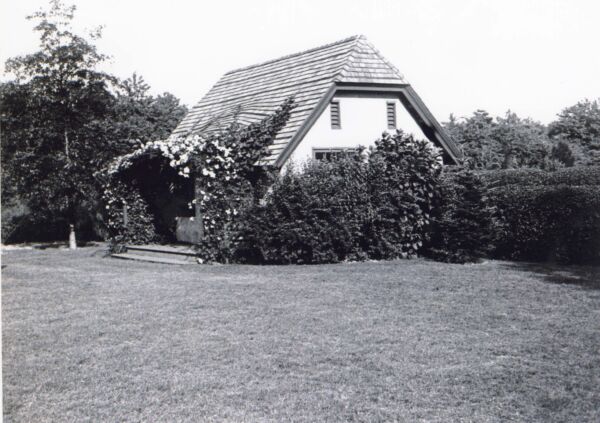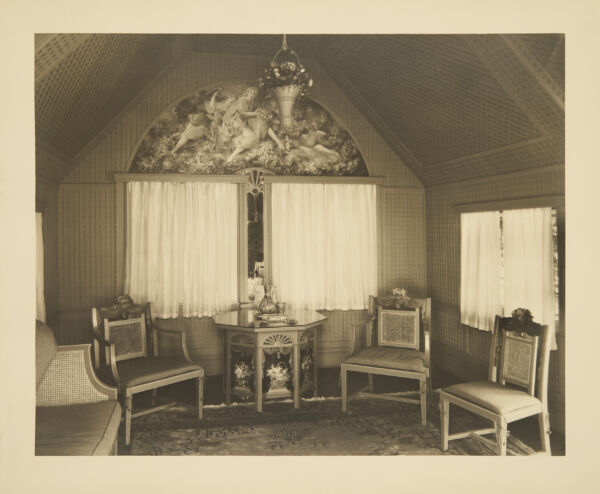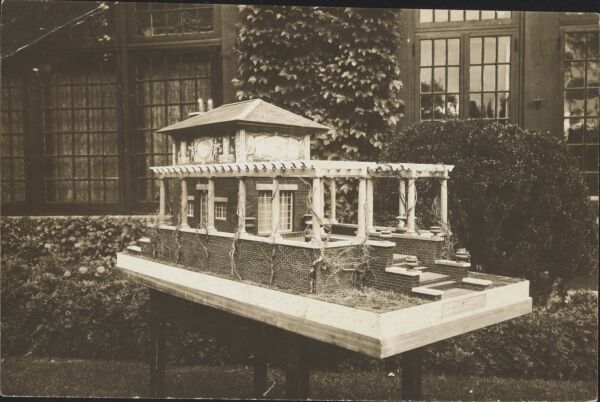In the spring of 1915, the Tea House underwent a transformation. Its humble origins began as a playhouse for James and Helen Byrne, the previous owners of Planting Fields. After the Coe’s purchased Planting Fields in 1913 they engaged Lowell & Sargent (and later the Olmsted Brothers firm) to design the Blue Pool Garden—and the little house was a crucial part of the plan. It’s attributed to Grosvenor Atterbury, who designed the Byrne’s house and the Coe’s had the Tea House elevated and clad in the same over-burnt brick to correspond to the main house.

Exterior of the Tea House before transformation, circa 1913, Planting Fields Foundation Archives
Inside, Everett Shinn transformed the Tea House into an elegant setting for Mai Coe to entertain guests. It’s designed in the spirit of Elsie de Wolfe, who Shinn worked for before striking out on his own as a decorative artist. Shinn orchestrated all the arduous details of the space—-he likely knew the very best craftsman from his experience working with de Wolfe. The green-blue treillage on the walls and ceiling are directly inspired by de Wolfe’s work on The Colony Club and her home in Versailles, France, Villa Trianon. Shinn was paid $2,000 dollars ($62,000 in 2024) for the two pastoral lunettes he painted depicting lounging youths among flowers and birds and designed and hand painted the furniture and fixtures.
 Interior of Tea House, circa 1916, Planting Fields Foundation Archives
Interior of Tea House, circa 1916, Planting Fields Foundation Archives
Shinn wasn’t satisfied with the interiors alone. He had greater ambitions for the exterior of the building, and wrote to W.R. Coe that, “it seems now as if we had a string of pearls in a shoebox, but with the new idea the outside will be as beautiful as the inside.” Known for making models of his stage sets he created a large model with an elevated roofline adorned with exterior murals and surrounded by an extravagant pergola. Despite his persistence—he shipped the model to the Coe’s from his home in the Catskills, this grand vision never came to fruition.
 Tea House Model, with the Byrne house in the background, Everett Shinn collection, 1877-1958. Archives of American Art, Smithsonian Institution.
Tea House Model, with the Byrne house in the background, Everett Shinn collection, 1877-1958. Archives of American Art, Smithsonian Institution.
– Marie Penny, Michael D. Coe Archivist

